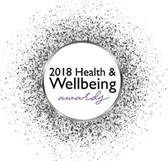|
Luckily the penny dropped right away with me that yoga was something I needed to prioritise. That this is what I needed to do to improve pretty much every aspect of my life. I immediately felt less stressed and tired. Literally by the end of my first 20 minute practice I felt like a weight had lifted from my body, from my mind and from my sense of wellbeing. I knew I needed to keep doing this regularly to top up these effects and I've never looked back. What else do you put in your calendar that helps you feel better, find more space and freedom in body and mind, and helps everyone around you? I practise yoga every morning before I come down and breakfast with the kids for exactly this reason. It enables me to bring more vitality and a better mood to the table, which helps my day, their day, and get us off to a good start. They are teens so they need all the good vibes they can get or it can be a rocky ride. Finding the right practise, the right level of effort and ease, the right intensity and relaxation is hard to find these days. There is a lot of power yoga that is fast and vigorous, heated to intensify the experience, skipping through poses with barely a chance to catch your breath.
But there is also what we offer at YogaSpace ... there is a quietness to what we teach, it is challenging but gentle, understated but highly effective and brilliantly accessible. It can take getting used to but brings all the benefits that yoga has to offer. Add slow breath and focus to any posture and you'll discover a new way to practise. It can take time to get it to feel familiar, to get comfortable and to learn the skills of effective practise, but that is why it is called practise. The penny might not drop right away, it might not feel like the workout you thought you needed, but you'll soon find your way with it. Along with our group classes that we offer, there are some in-depth workshops coming up that will help kick start and develop your practise in a way that only small group guidance can.
0 Comments
There is plenty in our lives that we have to do; we have responsibilities and obligations. But we can also make a conscious choice when the opportunity arises to resist being busy and distracted.
What can you do more of now that will feel right when you reflect at the end of your life? 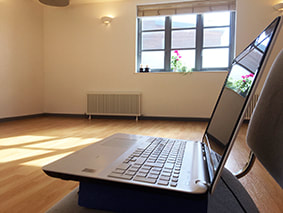 Online yoga has firmly established itself in our lives. It offers brilliant benefits and enables more people than ever to discover yoga practice. Yoga is so good, that even a a few asanas (postures) can quickly improve how you feel - as can other straightforward exercise forms. Anything is generally better than nothing, no matter what it is. The body likes to move. So having an in-person yoga teacher isn't a pre-requisite to get started. 'Yoga with Adrienne' and those like her have a valuable and worthwhile place in a yoga practitioners tool kit. Is in-person yoga different?I teach a handful of people who I've never met in person, just via the screen. I know most of my online students from before we all went online, but a few have joined me along the way. Some of these have since met me for 121s or come to my studio for class from time to time so that I can get to know them and their practice further. This is immensely helpful. Seeing them in-person helps the guidance be more tailored to them, and also helps me then picture what they are likely to be doing when they appear in their little box on the screen. I can anticipate the habits they are likely to accumulate if I see them from time to time. If I haven't seen you in two years, I have very little to go on except where you were 2 years ago, and what you have fed back to me along the way. When I see you practice in your little box, I'm able to see if you have got the right end of the stick, I can pick up on a few cues, and so can trust that the basic benefits will be coming your way. Then there are people I see regularly in-person. We chat, I see them practice and see the response in them, I see how they breathe, and hear the quality of their breath, which can be the most revealing part of someone's yoga practice and helps me provide more nuanced guidance. I can see where they benefit and where they struggle, notice their expressions or tension signs during practice, and help them practice with increasing skill. Deepening a yoga poseYoga practice isn't just about accessing a posture, going 'further' in a pose, or developing physical prowess. The health benefits and physical development are rather wonderful and compelling side effects. Often we aim to do 'more' with a pose or with the breath than is necessary. We continually 'try' and 'strive' in our practice. We want to go further, deeper, stronger, and so on. If we aren't trying, then what is the point? Trying too hardThis accumulative 'trying' is perpetuated from the rest of our life, and seems to be an expectation of all our pursuits. If we aren't 'getting anywhere' then why bother? We 'try' all day long, pushing, striving, grasping, wanting in sometimes very subtle ways. Our yoga practice doesn't have to be that. It can be a counter point to how we habitually find ourselves in the rest our life. It can become a place of skillfully noticing our habits and attitudes and then finding ways of 'letting go', of shedding and removing blocks, tensions, excess efforts. These are commonly blind spots that you can't see on your own, or at least it will likely take you much longer. Yoga is as much about 'doing' something as it is about 'un-doing'. Offering ways of moving, breathing and sitting which are beyond a place of struggle and striving. Helping to find a place of greater freedom which might not be realised when you are seemingly getting along fine on their own with their screen as the guide. Finding qualities of space and freedom in your yoga practice can be revelatory. Discover moreHere's the thing with yoga... you can take practice for years and enjoy the immediate benefits of it helping you feel great. It provides so much - bringing us a comfort in our body, breath and mind so quickly. It provides so much strength, health and suppleness over time too. This is its power but also its sticking point. As we then might overlook its greatest potential. The developmental discipline, subtlety and insightful power of intimate yoga (in a space that doesn't involve a screen).
It awaits discovery for those who are curious. 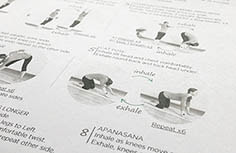 Are you good at yoga? Are you doing yoga wrong? Is there a body position you struggle against? Is there a breath technique which feels hard? Who made up the rules of yoga anyway? Rules are made up by peopleRules are made up by people. They are guidelines that probably helped someone (or many people) to gain more from their yoga practice, and so they keep being repeated and enforced in the hope that they will help you too. They are often from a book and you don't really know if the person who wrote the book would stick to that rule if they knew what happened with you when you tried to follow it. Or the rule might simply be from a bossy person who likes to tell people what to do. I do this to my kids quite often, enforce rules and boundaries, sometimes I'll seem bossy. And this has its place. Sometimes they just need to know where to start, and what to do, and how to do it. It is a good place to begin for them, and they like rules ... at first. But at some point there is a conversation about the rule, when they are ready or when they feel like that rule isn't a great idea, and the rule may well be due for an update as a result of the discussion. Or they may just need to understand what underpins the rule helps it make more sense to them. When to break the rulesRules are there to be helpful. But rules are also there to be broken / updated / changed when they aren't working.
If you come up against a rule in yoga, use it as a springboard for your own enquiry into what it does for you, or what it doesn't do for you. This doesn't give you free reign to do what you like, discipline is a powerful tool in yoga and one that I have high regard for. This is where teachers are really helpful. Someone more experienced at understanding this rule than you, with whom you can discuss it. Explore why the rule would be a helpful one for you to work with (or not). What might the rule offer that your not seeing from your viewpoint. Be prepared for an outcome either way, or if the teacher doesn't know why the rule is there, and isn't able to explore it with you, then find someone more experienced who is. Perhaps the rule is generally a good idea, or perhaps the insight you gain from the conversation and enquiry is perhaps more beneficial than the rule itself. I'm part of a community of teachers who participate in the Association of Yoga Studies (AYS). A group of a few hundred teachers, mostly in the UK, who meet annually to share teachings, learn from experts in their field, and continually develop our knowledge and understanding of yoga and yoga teaching. We are based in the teachings of TKV Desikachar and his father, Krishnamacharya, Viniyoga. Part of this tradition is chanting. Chanting the Yoga Sutras was a core part of my teacher training. Learning by heart some of this core text which forms the basis of much of what I teach. Even though it is over 2,000 years old, the teachings on the mind are so relevant to modern life. Being able to chant in Sankrit was a surprise part of my training that I didn't realise I was going to learn to do, but here I am, years later still continuing and participating in group chanting. There are practical reasons to learn how to chant... - breath development - learning the ancient teachings of the Vedas and Yoga Sutras by heart - focus and concentration (you literally can't drift your attention and remain true to the Sanskrit sounds without knowing that you have, as you'll make an audible mistake right away and bringing your focus keenly back) - quietening the body, nervous system and mind But something else happens when you chant, especially when your in a group. A resonance takes place in your own body and mind. Especially with the group sound, the coming together of individual voices to make a collective sound which is a wonderful and powerful experience. Anyone who takes part in a choir or orchestra will understand what I'm talking about. It's no coincidence that every culture has singing practices embedded deep within. And Covid has reminded us the value of being together in a room with others. Chanting in Sankrit, continuing the strict chant rules and pronunciation that has remained as unchanged as possible for over 2,000 years is an inspiring experience. It brings us together, connecting us individually, as a collective, and to the shared subtle underpinning of our everyday life. This past weekend I took part in a wonderful Vedic Chanting retreat with Chris Preist. Coming together with a shared joy of yoga practice and study with time for reflection and silence has never felt as needed as after the challenges of Covid. If you've ever wondered about chanting, please do ask me, or come to one of my workshops where we use simple chanting and sound practices. Or simply try humming to yourself and start to enjoy the sound and vibration. Try this...Lie on your back, knees bent.
~ Place your hands over your eyes (not pressing on the eyes themselves) and block out the light. ~ Gaze into the darkness and patterns that appear there. ~ Relax ~ And then take a soft, easy hum each time you exhale. ~ Do this for a few minutes, slowly listening to the sound of each hum. ~ No matter what note or quality of sound, and no matter if you like the sound of your voice or not. Feel the sound if you don't like to listen to it, ~ After 5 minutes, see how you feel. Something will have changed in you. ~ Ponder.... 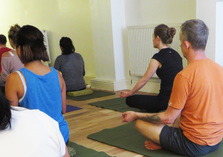 Do you know anyone who isn't busy? Really busy? Chances are you have a long list of things to do (once you've done all the things you need to do). And once you've done that, you'll find something else to keep you busy. Radio 4 recently had a short article on how we are 'addicted' to being busy and I have to say it rang very true. As a society, it is almost a badge of achievement to say your really busy. We value you, the idea of doing, achieving, getting more things done. Really it is easier to be busy than to not be busy. But are 'busy' things distracting us from bigger objectives? We're so used to our time being filled that I'm not sure we'd be entirely comfortable with having nothing to do. When we might actually get a chance to turn our attention beyond the daily distractions. Unfortunately stress, health dilemmas, being 'burnt out' are all modern day results. And what have we really achieved? The idea that we are too busy to take care of ourselves, to maintain a balance in our lives between doing, achieving, and being and experiencing is a conversation we should probably all have with ourselves along our journey - regularly. Yoga practice, and other meditative practices try to encourage moving away from 'doing' and entering a state of 'being' as a regular habit. To become familiar with other aspects of our lives and see what arises as we do this. At least weekly, preferably daily, try simply 'being' for 5 or 10 minutes. Try sitting, gazing, breathing, meditating, a moving meditation such as yoga, whatever you like. Try it and see what happens... 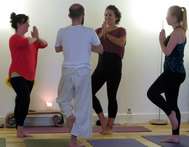 Yoga classes have begun to polarise. From the fast and sweaty vinyasa flow and Ashtanga yoga, to the restorative and Yin yoga classes that have emerged. They seem to be on two ends of a wide spectrum of modern postural yoga classes. People turn to yoga for a range of different reasons. Perhaps you've come to it to feel stronger or more flexible, or you enjoy the heat and sweat that it can build. Perhaps you enjoy the stillness and calm that it offers, or the good nights sleep it gains you. You may have an injury or pain that you are looking to sort out, or perhaps you just want that elusive feeling of wellbeing. They are all good reasons to practice yoga, and finding the right approach for your practice is more than just the immediate feeling it leaves you with. Your practice should leave you feeling better than when you started, and progressively better in the long term. You may be surprised that I even need to state this. But I regularly speak to practitioners and even yoga teachers who switch between two extreme styles of yoga practice in an effort to keep themselves balanced. Taking a strong vinyasa class supplemented with a Yin or restorative class seems a simple contradiction in approach. It's nice to change pace and explore from time-to-time. But to pursue the challenge and energy which then leaves you needing restoration to enable you to continue this cycle seems worth reflecting on. It is a cycle we often undertake in life which we then replicate on our yoga mats. Yoga practice is for the long term. It should support your primary aims as well as deepening your sense of internal balance with consistent practice. The balance of yoga doesn't begin on the mat, it beings before you get there, with your intention and choice of how to practice. Back to YogaSpace Homepage  Yoga helps us achieve improved health and wellbeing. Here are 10 things to watch out for during yoga classes to help you get the most from your yoga practice. Avoid these and your practice will be far more effective. If you find yourself doing these things, don't be disheartened - but do explore why you do them, see what happens if you mindfully avoid them, and in time you'll find the quality of your practice improves along with the benefits. 1) Avoid being late to class If you arrive late, you are likely to be flustered and rushed. Arrive early or on time and you can settle yourself and get more from your practice. (But being late is better than not coming at all.) 2) Don't have your phone on This is time for you, time to step outside your everyday life and ground yourself. Watching the phone won't help, and you won't fully switch off from your 'doing' mode. Plus ringing or vibrating phones can be off-putting for others in the class too. 3) Don't chat Once the practice starts turn the focus inwards rather than chatting with your friends. 4) Don't eat a full meal before practice It will be uncomfortable and those twists and abdominal holds will be limited by a full belly. A small snack is fine if you need to keep up your energy, but a full meal will restrict your practice and lose some of the energetic effects. 5) Don't look around during practice The gaze is an important part of yoga practice. There is a saying, "where the gaze goes, the mind follows" - looking around encourages the mind to jump around too, and we want to try and settle the mind as much as possible. Settling the gaze, or closing the eyes for some of the postures, helps you keep your focus on your practice. Admiring the water bottle of the person in front won't help you get the benefits of yoga. 6) Avoid fidgeting In the quest to develop our focus and attention in our yoga practice, fidgeting isn't helpful. Instead, try to notice that you want to adjust your t-shirt every time you finish a pose, notice that you want to do it, but don't react to it, don't do it, simply enter into stillness and see how it makes you feel. 7) Don't push too hard Yoga practice should be engaging, even challenging, but if you find yourself constantly pushing yourself, then easing off slightly may improve the quality of your practice. We push ourselves all day, trying to get to work on-time, rushing around from task to task. During yoga, there should be an equal level of effort and grit but also of comfort and space in each pose (sthira and sukha). Notice your breath during the challenging parts of practice, if it isn't smooth and under your control, then it's time to ease off. 8) Don't drink in between postures Ideally, you should come to the class fully hydrated so that you don't need to take a drink in between each pose. Yoga practice can make you warm, even hot,and this is part of the practice which we don't want to dampen down. Usually we are drinking through habit, rather than actually needing to hydrate the body, which means we have lost our focus. Keep focused, have a drink at the end, and you'll reap more benefits. 9) Don't wear jeans They don't usually let you move freely and can be uncomfortable. Wear clothes that allow free movement. (Unless your jeans are of the full lycra variety.) 10) Don't beat yourself up If you find yourself unable to focus, fidgeting, looking around, sipping your water, running late to class, and glancing at your phone - don't beat yourself up about it. Yes your yoga practice has plenty of room for refinement, but it is still worth doing, regular practice will help things improve, and you'll feel better for having done it! Back to YogaSpace homepage  If you've said any of these things, then this article is for you: "where does time go?" "time is flying past" "I can't believe it is June already!". As we get settled into our familiar daily lives and our days become repeated patterns, it's true, time seems to fly past. We stop noticing each day for what it is (it is in fact a brand new day with a world of opportunity in it). We often find ourselves going through the motions and forget to pay attention (or are too tired to notice!). Here is a great suggestion to keep you a bit more grounded, a bit more mindful, and to make more of each day. ~ try something new for 30 days ~ Try something you have always wanted to do, but have never gotten round to doing. It can be anything you like, small, big, easy, hard ... but it will be new to you so will mark the day as different from any other in your life. Some suggestions to get you started - 5 or 10 minutes each morning of a home yoga practice, even if it is just one posture or movement! - give up chocolate - turn off the TV - learn something for 10 minutes a day (guitar, French, YouTube is amazing for videos on just about anything) - smile at 3 strangers every day - pick up some litter - sit quietly and meditate for 10 minutes - Or a big one...write a novel (1,500 words a day for a month and your a novelist! It might suck but who cares, you did it!) The idea is that 30 days is just about enough time for a new habit to stick (if it is a good one for you). And that it will help you re-engage with your life which otherwise will just pass you by. Go on, try something new... think it through and start on Monday! PS: And then 30 days later, try something else :-) Back to Bristol YogaSpace homepage 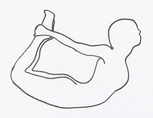 Yoga is great for improving our health and wellbeing. A well trained teacher will ensure that the class is safe and suitable for all participants. But yoga injuries do happen, and here are my top tips to ensure your yoga practice remains safe and enjoyable. 1) Listen to your body Yoga shouldn’t hurt. If it doesn't feel right, or your starting to feel strain in a vulnerable part of the body (e.g your knees, neck or lower back) then ease off and take a breather. Your body is yours so take care of it and work within safe limits, especially while you are getting started. 2) Start gently and build it up Don't go to your first class expecting to do everything. Whether you are seeking physical strength or improved breathing, connecting with yourself, focus, or relieving stress, there is no magic wand or quick fix to achieve these aims. Incremental changes will happen, and allowing yourself time to add challenges and layers of technique as you get used to the practices will bring the most benefit. Everyone has limitations, so be gentle with yourself and don’t be tempted to push it too soon. 3) Regular practice If you drop in to a class from time to time, your body will always be starting from the beginning and if there are any vulnerabilities, they are more likely to flare up. Regular practice will allow you to develop strength and stamina so that you can then further your practice. If issues or niggling pains do start to emerge, you'll have time to understand what triggers them and find ways around them. 4) Talk to your teacher Your teacher should be well-trained in a wide-range of injuries and ways to adapt the postures and techniques to suit you. Not all yoga teachers have this training (especially is they took their training over just a few weeks or months where they may only have covered postures, choreography and basic anatomy). Make sure your teacher understands any injuries or past vulnerabilities that you have so they can suggest alternatives or adaptations. You need to take some responsibility here and pro-actively talk to your teacher to ensure they can support you. 5) Yoga should never hurt Worth saying twice. Really. If it hurts, your body isn’t ready to go that deeply into it so ease off. Yoga classes aren’t (or shouldn’t be) competitive. Just because your neighbour on the mat next to you can do it, it doesn’t mean you should be able to. The class is there to benefit you, and every body in the class is different. So do things that will be helpful and have the wisdom and patience to know when to rest and wait for the next pose. Enjoy safe yoga practice and you will reap the rewards for years to come! 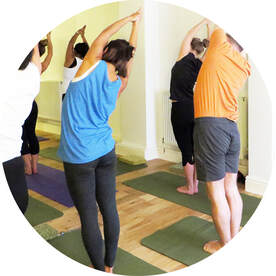 The time for good intentions is all around us. Perhaps we want to become fitter, more flexible, leaner, more creative, more focused, happier? All of these are possible. And to help, here are my top 5 tips for getting started. (Also read our GETTING STARTED page for new students.) 1) Start small - Pick one thing. A new class? Or a mini yoga practice at home that you can do every day just for 10 minutes (just pick 3 or 4 yoga postures and do that for a couple of months). Don't choose both of these, just choose one thing as that is effort enough. Focus on getting the habit started, rather than the results that you want to get from doing it. 2) Be realistic - pick the time that you can do every day or every week that is sensible and that can work for you more often than not. Then pick a class or a short daily practice, 3 or 4 poses that you think you can do and that you will enjoy. Your focus should be on getting the habit ingrained. The rest will follow. 3) Get started - the main thing is that you do it. It doesn't matter if you do it well, or if you have a cold so need to go gently, or that it is raining and cold and you don't fancy going to your class. The main thing is to get started, do it, and do it in a way that you can stick to. Get yourself on your yoga mat every week or every day. 4) Tell someone your getting started - this will help you make the commitment and increase your likelihood of doing it! 5) Don't miss two in a row. If you need to miss one, then ok. Try not to miss two in a row as then the habit is broken and all your good effort may not come to fruition. Keep going, even if only gently if your under the weather. If your away, then try to make up the class or the practice in another way that still counts. Good luck with getting your new yoga practice in place. The benefits will be worth it, all you need to do it turn up and do it :-). Happy new year!  Mindfulness - to be mindful. To be aware of each moment and to act with intention. Christmas - beyond the religious festival it is to fill stockings, make plans, see friends and family, plan menus, arrange travel, eat wonderful rich foods etc. It's busy, fun, tiring, stressful, overindulgent, exciting, a whirlwind ... a mix of many things. For many people, trying to maintain a sense of mindfulness when life gets hectic is a challenge most of us struggle with. Those who go to a yoga class will already have a headstart in maintaining a mindful attitude. To practice yoga is to develop a mindful body and movement with mindful breath. Maintaining a mindful approach helps you to enjoy the whirlwind. To experience joy and gratitude for the festivities all around us. It is all too easy miss if your too busy to notice. Try this... To help you remain mindful try setting aside as little as 5 minutes each day to re-set your intentions. Sit quietly, perhaps alone, or over a quiet cup of tea. Do nothing else except gaze softly at a blank wall, table, or natural object and settle your gaze there gently, or close your eyes. Notice your breathing, and connect with yourself for a short while. Note your intentions for the day and resolve to pursue them. Try this for 5 minutes each day through the Christmas period. Try not to get carried away in the potential whirlwind but to stay connected to what is important to you and to enjoy the moments. If you find yourself feeling too rushed or stressed, take a few deep breaths and ask yourself 'what would my 'mindful self' do?', and then act. Remember to take time to enjoy your Christmas festivities. Keep up some yoga or other grounding practice if you can. And see you in class in the new year. Back to Bristol YogaSpace homepage  I've recently been inspired by reading about minimalism as an approach to living. I've been enjoying how it reflects many values that I hold close, and that I've been cultivating through my study and practice of yoga. It has also inspired me to have a really good clear out of my home! The idea of living simply with less to enjoy life more is one that has taken more prominence for me since becoming a yoga teacher. I teach viniyoga - yoga that is applied carefully and adapted to suit those who are participating. Viniyoga embodies a minimalist approach to yoga practice. It doesn't require a super heated yoga studio, or any special kit (no blocks, belts, bolsters or even mats required). Nor does it require a certain level of fitness or skill to participate. All you need is you, your body, your breath, and your attention. In fact this is why it initially appealed to me. I wanted to start practicing yoga at home but found the foam blocks, folding chair, bolster, strap and bricks used in class rather unwieldy and off-putting to home practice, and questioned how essential they really were. Upon discovering the simplicity of viniyoga I was hooked, home practice became encouraged, and there has been no looking back. I often do use a sticky yoga mat, but at home I'm equally happy practicing on a carpet (or even floorboards if necessary as I did last week when I was away but it's a little less comfortable). I use my body's own weight to create resistance to help strengthen and energise as I practice the various postures (asana) of yoga. Viniyoga has a minimalist approach to the repertoire of asana usually practiced. At it's core there are a carefully selected set of primary asana, each serving an important purpose. These asana are gradually explored in further and further depth, with a deepening emphasis on breath and focus and techniques around these as the practice advances. This makes it a very accessible form of yoga practice as you can deepen your yoga practice and continue to develop without the need for a gymnast's or dancer's body. Let's face it, if you started practicing yoga as an adult, that isn't a realistic ambition for most people. And beyond the daily bodywork and breathwork to maintain and develop our health, yoga cultivates mindful compassionate living, minimising the dependence on material attributes in our lives so that we have space to spend each day in an enjoyable, meaningful way. A wonderful way to live with amazing potential. Back to the YogaSpace homepage.  Yoga practice isn't just confined to the mat. The ancient discipline suggests bringing intention to how you conduct yourself - including what you consume. So choosing to eat foods that benefit you both inside and out, are part of practicing yoga throughout your day. But how to do this and still enjoy what you eat? I love quinoa (pronounced 'kin wa') which is a grain originally from South America. My friends are bored of me saying how great it is and coming up with new and interesting ways of eating it, so I thought I'd share my favourite recipe with you in case you hadn't discovered it yet. It also happens to be the International Year of Quinoa as designated by the United Nations as it is so easy to grow and so nutritious. It isn't just a grain, it is a seed packed full of protein, calcium and all things good. Its delicious (when spiced up a little), nutritious, good for you and our rather lovely planet. Anyway, jump on the band wagon and try it! ~~~ Spicy Quinoa Salad 1 cup of uncooked quinoa 2 cups of boiling water 1-2 onions 2 cloves of garlic 1 red pepper 1 cup of cooked sweetcorn 1 tin of black or adzuki (or any other) beans drained 1 tsp hot sauce or chopped chilli 1/2 tsp cumin powder 2 tbsp lime juice 2 tbsp olive oil salt and pepper to taste handful of fresh chopped coriander Step 1: Cook the quinoa. Add the quinoa and boiling water in a pan, put the lid on and simmer for 10 mins, then turn off the heat and leave for 10 more mins with the lid on. Then fluff with a fork and allow to cool. Step 2: While the quinoa is cooking, lightly saute the onion, garlic and red pepper, and cook the sweetcorn. Step 3: Mix together the sweetcorn, beans, hot sauce, cumin, lime juice, olive oil, salt, pepper and coriander. Step 4: Once the quinoa has cooled enough, mix all together in a big bowl and enjoy! Check out this great quinoa recipe site www.LoveQuinoaRecipes.com Back to Bristol YogaSpace homepage  As we set our good intentions for the new year (including re-igniting your commitment to yoga classes!) it is sometimes helpful to get some inspiration... The Dalai Lama shared some wonderful advice on how to live in the new millenium, and I love to read them at the start of each year. Enjoy in a short video or read below! The Dalai Lama's 18 rules for living 1. Take into account that great love and great achievements involve great risk. 2. When you lose, don't lose the lesson. 3. Follow the three Rs: 1. Respect for self 2. Respect for others 3. Responsibility for all your actions. 4. Remember that not getting what you want is sometimes a wonderful stroke of luck. 5. Learn the rules so you know how to break them properly. 6. Don't let a little dispute injure a great friendship. 7. When you realize you've made a mistake, take immediate steps to correct it. 8. Spend some time alone every day. 9. Open your arms to change, but don't let go of your values. 10. Remember that silence is sometimes the best answer. 11. Live a good, honourable life. Then when you get older and think back, you'll be able to enjoy it a second time. 12. A loving atmosphere in your home is the foundation for your life. 13. In disagreements with loved ones, deal only with the current situation. Don't bring up the past. 14. Share your knowledge. It's a way to achieve immortality. 15. Be gentle with the earth. 16. Once a year, go someplace you've never been before. 17. Remember that the best relationship is one in which your love for each other exceeds your need for each other. 18. Judge your success by what you had to give up in order to get it Back to Bristol YogaSpace homepage > Many fitness classes are available just to drop-in whenever you feel like it. So why do we encourage students to take Yoga as a course of classes?
Yoga is of course different from a fitness class, and our aim is to encourage everyone to get the most they can from learning about and practicing Yoga. It's true, you can get some of the benefits from your very first Yoga class, or by turning up every now and again to a class. We are very open to students coming along to classes in that way. Simply by stretching and moving the body, and breathing more deeply, you are starting to energise and open up a bit more. But this is just the very tip of a rather large iceburg, and our aim is to deepen your experience. One of the aims of Yoga is not only to improve your overall health, but also your wellbeing, and much more besides. This includes physical and mental wellbeing. Yoga is working not only at the physical level, but also on the mind, and many of the practices of Yoga aim to help cultivate clear thinking and a sense of connection to your body, and also aim to open up and release the tension and energy in the body. By committing to a course of Yoga, you are actually taking the first step towards disciplining your body and mind, agreeing that every week, whether or not you mind or body is saying to you you'll give it a miss this week, you turn up anyway and work on cultivating positive practices. And you'll always be glad you did. Over the weeks of the course, you'll start to become familiar with the basic, foundation aspects of the postures, and get to know your bodies stiffnesses and weaknesses feeling them gradually improving. You'll also start to learn the more subtle aspects of practice: your ability to gradually control your breathing (in turn starting to control your over-active mind and intensifying what you are able to achieve in each posture), developing your focus and attention during practice, releasing deeply held tension and blocks, and the ability to gradually deepen your weekly experience. It's true, some of the techniques take years to learn, but each week you gradually take it further, and each term, you'll build on the various layers of practice that will enhance your experience and get the most benefit. I've been practicing Yoga for many years, and I still take regularl classes and always learn something new. Regular practice also makes practicing Yoga safer. Allowing your body to become familiar and confident with the unusual positions you may find yourself in. By regularly stretching and maintaining health in the muscles, joints you can worry less about if you can get into the postures and start to develop the more subtle aspects of practice. We're just getting going with the Autumn term where there are many Yoga Courses you can enrol in. Our experienced teachers are passionate about Yoga and all of us have studied the philosophy and methodologies of Yoga in depth over many years giving us the opportunity to carefully structure the classes so that they are appropriate to develop each student. Feel free to get in touch to find out more. Don't just do Yoga, learn Yoga Back to homepage There are many inspiring stories of how practicing yoga has helped to support people with serious health problems back to full health. Here is a wonderful account of an NBA basketball player struck down with a serious kidney condition which resulted in a kidney transplant, and how his dedicated practice of yoga helped save his life and his career as a professional athlete...
Read more in this inspiring post by Trevor Kearney... Back to homepage > If you've tried yoga, you may already have an idea about the health benefits it can bring, the calm state of mind it can develop, the concentration and self-disclipline it can foster. Finding the right teacher and the right style for you is essential and not everyone takes to it straight away. But it has stood the test of time and has so much to offer.
But can yoga also develop these qualities in children? And could it help them increase there prospects of making more of their time in school for learning? Yoga is being tried at Quarry Brae primary school near Glasgow who are trying it to find out and so far the results are really encouraging. The school is in a deprived area and many of the children show up to school without having a structured start to the day, often coming from unsetttled home environments. This can set the day off with a rocky start, and the disruption can spill over into the classroom where concentration and discipline can be challenging. They have been trying starting the day with some yoga techniques, using some physical postures, chanting, breathing, mudras to calm the children down, provide a sense of concentration and discipline and prepare the children much better for a day of group participation and learning. The children are responding well, enjoying the practices, noticing and commenting on how calm they feel and how it is helping them to concentrate and 'feel better'. One 11 year old comments: "I got hit in the face with a ball, usually I'd go up and start a fight with whoever did it but I don't any more. I used to have a quick temper and yoga has calmed that down." Many of the physical yoga postures were designed with children in mind. They often have playful names like 'downward facing dog' to help make them memorable and appealing. And practices such as jumping in and out of the postures help keep the young people engaged and challenged as they work through the practice. The school teachers are supportive and at least one has gone on to be trained as a yoga instructor and is bringing yoga practices in to her classes to help prepare the children for learning. It takes a specialist approach to help children get the best out of their yoga practice. But what this school has done seems to demonstrate something that should be explored and tried out further, both with children and with adults. Many of us are already embracing the benefits of yoga and gradually learning how to apply yoga to help us in our everyday lives. It has so much to offer from relaxation and calmness, to health and therapy to support and improve health problems, and can even bring a more connected, holistic and spiritual aspect to our everyday lives. Lots to explore. |
More blog articles >Categories
All
Archives
July 2024
|
|
Bristol YogaSpace Ltd
Princes Place, Bishopston Just off Gloucester Road Bristol BS7 8NP |
|

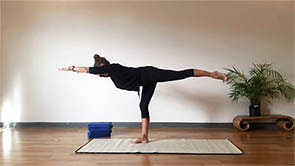





 RSS Feed
RSS Feed

